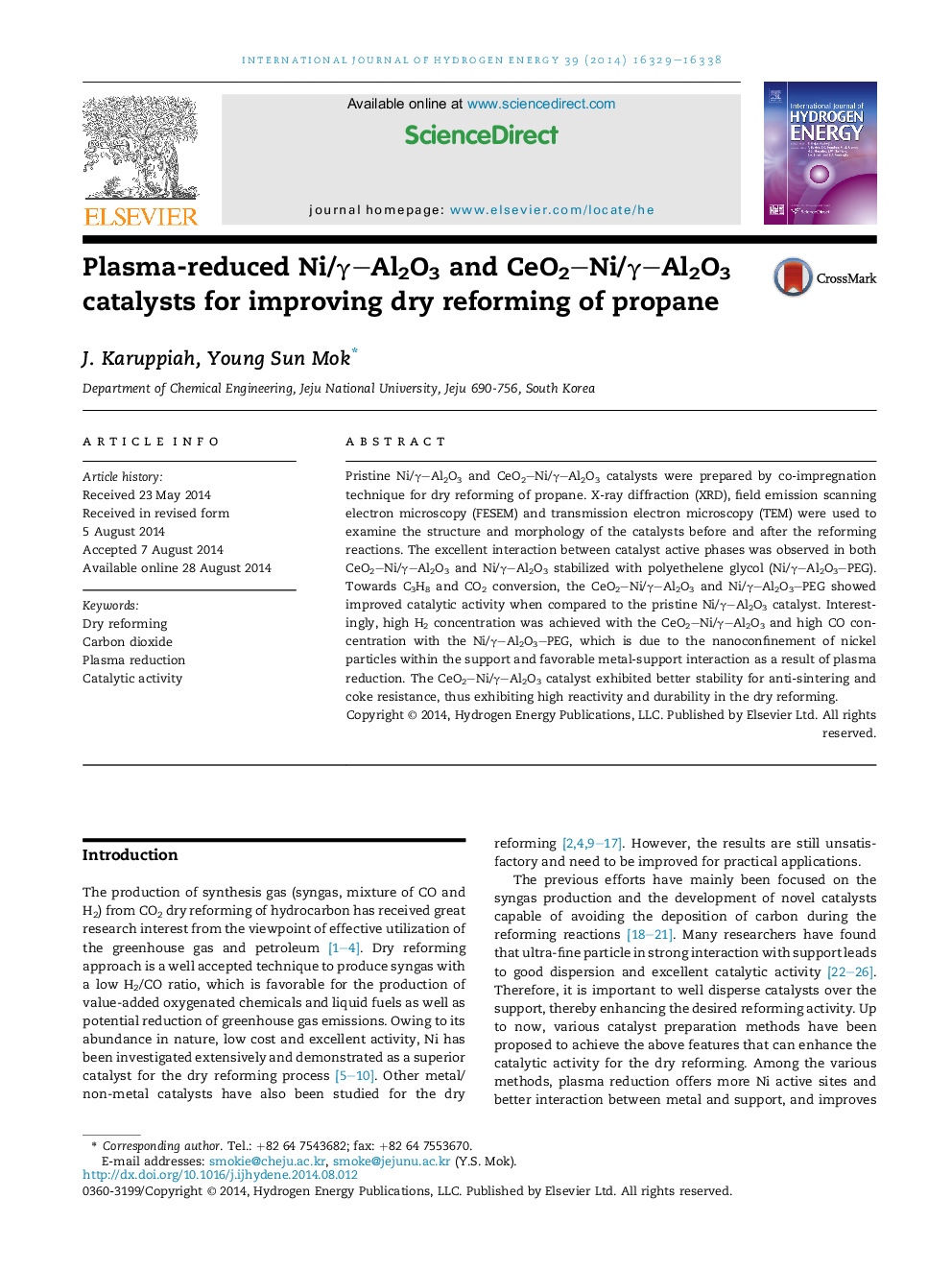| Article ID | Journal | Published Year | Pages | File Type |
|---|---|---|---|---|
| 1280971 | International Journal of Hydrogen Energy | 2014 | 10 Pages |
•High dry reforming activity of CeO2-promoted and PEG-stabilized Ni/γ-alumina.•CeO2–Ni/γ-alumina exhibited good stability for anti-sintering and coke resistance.•Plasma reduction offered more active sites and good metal-support interaction.
Pristine Ni/γ–Al2O3 and CeO2–Ni/γ–Al2O3 catalysts were prepared by co-impregnation technique for dry reforming of propane. X-ray diffraction (XRD), field emission scanning electron microscopy (FESEM) and transmission electron microscopy (TEM) were used to examine the structure and morphology of the catalysts before and after the reforming reactions. The excellent interaction between catalyst active phases was observed in both CeO2–Ni/γ–Al2O3 and Ni/γ–Al2O3 stabilized with polyethelene glycol (Ni/γ–Al2O3–PEG). Towards C3H8 and CO2 conversion, the CeO2–Ni/γ–Al2O3 and Ni/γ–Al2O3–PEG showed improved catalytic activity when compared to the pristine Ni/γ–Al2O3 catalyst. Interestingly, high H2 concentration was achieved with the CeO2–Ni/γ–Al2O3 and high CO concentration with the Ni/γ–Al2O3–PEG, which is due to the nanoconfinement of nickel particles within the support and favorable metal-support interaction as a result of plasma reduction. The CeO2–Ni/γ–Al2O3 catalyst exhibited better stability for anti-sintering and coke resistance, thus exhibiting high reactivity and durability in the dry reforming.
Graphical abstractFigure optionsDownload full-size imageDownload as PowerPoint slide
